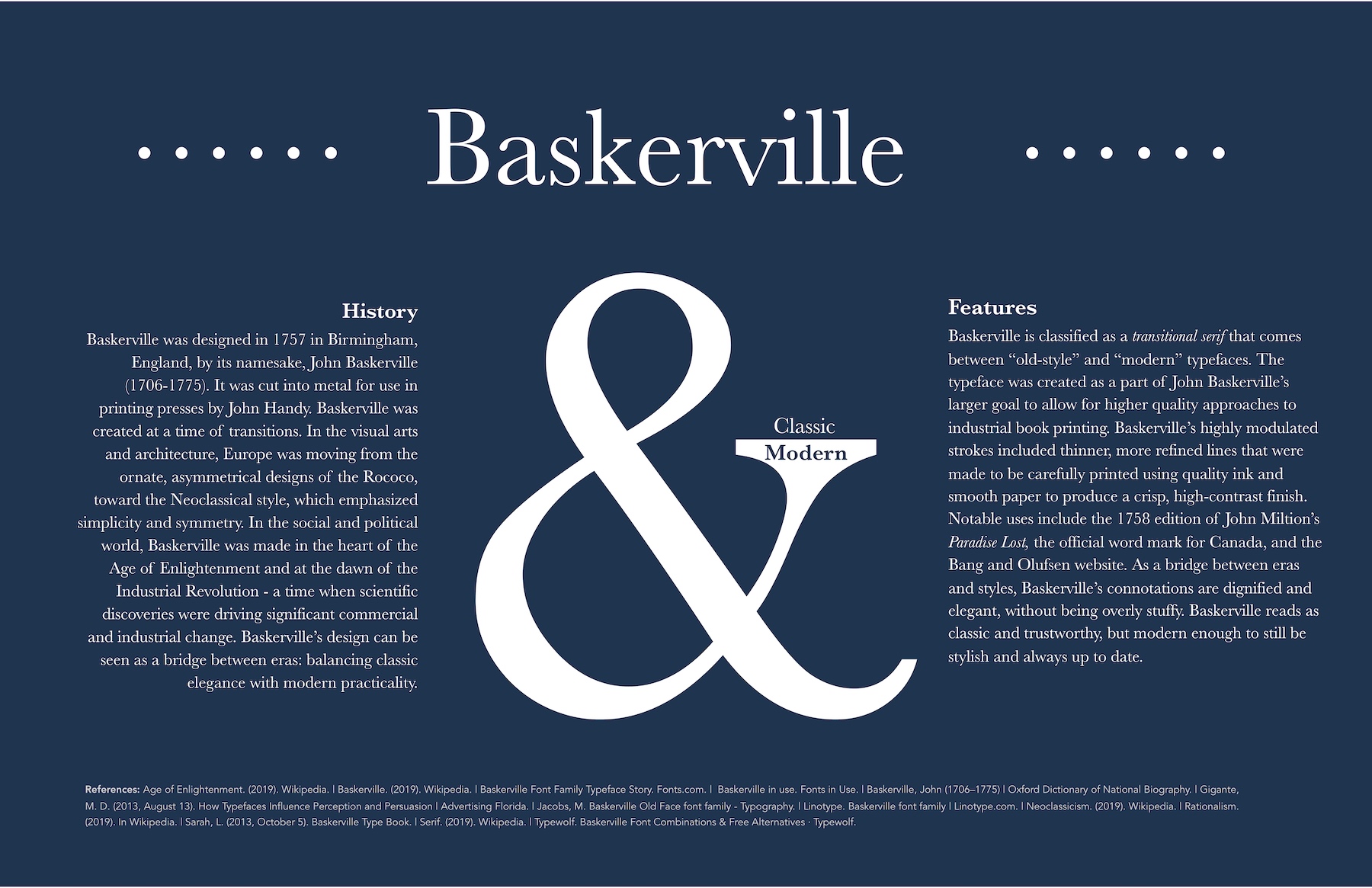Baskerville

In the world of typography, few names resonate as deeply as Baskerville. It’s not merely a font; it’s a legacy, a testament to the enduring power of design to captivate and influence. Created by the legendary John Baskerville in the 18th century, this typeface has stood the test of time, evolving and adapting while maintaining its distinct elegance and sophistication. From the pages of classic literature to the digital screens of the modern era, Baskerville continues to leave an indelible mark on the world of typography and design.
The story of Baskerville begins in the bustling streets of Birmingham, England, where John Baskerville, a printer, and typographer, embarked on a quest to revolutionize the world of printing. In an era dominated by the rough and imperfect typography of the time, Baskerville sought to create something different – something that would elevate the printed word to new heights of beauty and clarity.
Drawing inspiration from the elegant letterforms of the Italian Renaissance, Baskerville meticulously crafted his typeface, paying close attention to every curve, every serif, and every stroke. The result was nothing short of extraordinary – a typeface that exuded grace and refinement, with a perfect balance of form and function.
Baskerville’s masterpiece made its debut in 1757 with the publication of a lavish folio edition of Virgil’s works. Instantly recognizable for its crisp lines, sharp serifs, and generous proportions, the Baskerville typeface captured the imagination of printers and designers across Europe. It wasn’t long before Baskerville’s creation became synonymous with quality, elegance, and sophistication.
But Baskerville’s legacy extends far beyond the printed page. His meticulous attention to detail and relentless pursuit of perfection laid the groundwork for countless innovations in the field of typography and printing. From the invention of new printing techniques to the development of cutting-edge typefaces, Baskerville’s influence can be felt in every aspect of modern design.
One of the most remarkable aspects of Baskerville’s legacy is its adaptability. Despite being over two centuries old, the Baskerville typeface remains as relevant and influential as ever. Its timeless elegance and unparalleled legibility make it a favorite among designers for a wide range of applications, from book design to branding to digital interfaces.
In recent years, Baskerville has experienced a resurgence in popularity, thanks in no small part to its widespread adoption by digital designers and typographers. Its clean lines and classic proportions make it an ideal choice for websites, mobile apps, and other digital platforms, where clarity and readability are paramount.
But perhaps the most enduring testament to Baskerville’s legacy is its continued presence in the world of literature. From classic novels to contemporary bestsellers, Baskerville can be found gracing the pages of some of the most beloved books of all time. Its timeless beauty and timeless elegance have made it the go-to choice for publishers looking to imbue their works with a sense of sophistication and refinement.
Of course, no discussion of Baskerville would be complete without mentioning its enduring influence on popular culture. From movie posters to album covers to advertising campaigns, Baskerville has been used to convey everything from elegance and sophistication to mystery and intrigue. Its versatility and adaptability make it a favorite among designers looking to make a bold statement with their work.
But perhaps the true magic of Baskerville lies not in its outward appearance, but in the emotions and associations it evokes in those who encounter it. For some, Baskerville is synonymous with tradition and heritage – a timeless reminder of the rich history of printing and typography. For others, it represents innovation and progress – a symbol of the endless possibilities of design and creativity.
In the end, the legacy of Baskerville is a testament to the enduring power of typography to shape our world and our perceptions. From its humble beginnings in 18th-century England to its ubiquitous presence in the digital age, Baskerville has stood the test of time, inspiring generations of designers and typographers to push the boundaries of what is possible. And as long as there are words to be printed and stories to be told, the legacy of Baskerville will continue to endure, reminding us of the timeless beauty and elegance of good design.





